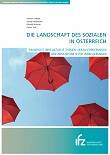The Social Landscape in Austria
Social Mapping
About the Research
Disabled or chronically ill people, single parents, or migrants are more often at risk of poverty than average citizens. One of the reasons is that different types of disadvantage can mutually reinforce each other. They result in a negative spiral, which often also results in mental and physical illnesses and lead people into situations that are hard to overcome. In the course of our research it became clear that individual factors, such as disadvantages on the housing and labor market, do not exist on their own, but overlap. Unemployed persons in particular experience greater difficulties to be granted equal access to housing or health services than people in full-time employment.
On the basis of these insights, we developed a set of suggestions aimed at solving such problems and meant for private individuals and foundations, but also for politicians. For example, we suggest implementing social space-oriented work opportunities in model regions, followed by an evaluation of their effects; we also propose establishing centers for volunteers. After all, the different challenges can only be faced through the joint commitment of various social actors. This requires coordinated cooperation of public institutions and private service providers, volunteers, and civil society. This, in turn, can only happen through mutual networking, trust-based relationships with people disadvantaged in these ways, and low thresholds.
A brochure concisely summarizes the results of the project. It provides useful information for practitioners working in the social sector, illustrating some of the most important social hot spots and proposing ways to take action.

The Social Landscape in Austria
For several years, ifz-researchers have dealt with different actors of the public, the informal and the formal sector of Austria’s social landscape. The aim was to explore pressing social challenges, such as the difficult situation on the labor and housing markets or the situation of refugees and migrants. The project results clearly show that the most vulnerable groups usually have to face the greatest disadvantages.